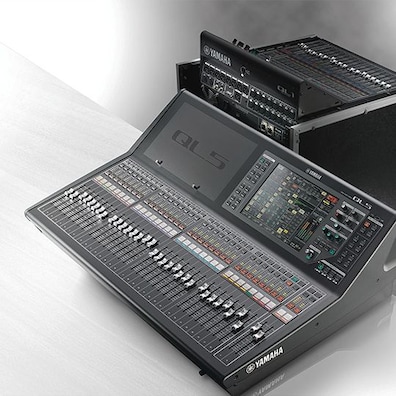Yamaha QL1 Aids St Martin-in-the-Fields Inclusive Welcome

One of London’s most famous places of worship, St Martin-In-The-Fields, has a long history of opening its doors to people from all faiths and walks of life - or indeed no faith at all. Welcoming 750,000 visitors every year to church services, events and music performances, a Yamaha QL1 digital mixing console is at the heart of its newly-upgraded audio system.

The church also occupies a unique place in broadcast history, having made the very first religious broadcast, and it continues to broadcast to people around the world. Working with a knowledgeable partner to upgrade the church’s audio system is essential to ensure such a variety of audiences are able to fully share in the church’s mission. This is why, when the church put the project for a new audio system out to tender, SFL Group’s extensive portfolio of worship installations meant that the company was a natural invitee. Having presented a proof of concept with a Yamaha LS9 digital console, the company was asked to undertake the project.
“Being open and inclusive are the cornerstones of the church’s mission, part of which is ensuring that its congregation and audiences enjoy the best possible sound at its services and musical performances,” says SFL Sales and Installations Manager Tim Horton.
“Originally we were going to use the LS9, because we needed a console with a small footprint, but it was also very important for the church to have Dan Dugan auto microphone mixing. When we saw the QL1, which has the Dan Dugan facility built in, it was the obvious choice. It saved an expansion card slot, plus the combination of Dante networking with local i/o meant we could tailor the system precisely to the church’s needs. It made the system more flexible, yet more straightforward, than any other solution.”
The historic architecture of St Martin-in-the-Fields meant that aesthetics were just as important as acoustics, so the QL1 is installed in an unobtrusive oak cabinet which matches the pews around it. Complementing the console is a Yamaha Rio1608-D i/o unit at the altar end of the church, plus a pair of Ro8-D output units for broadcast requirements.
“The church has 11 lectern microphone positions, plus five wireless microphone systems and some ambient microphones,” says Tim. “The church wants to be as inclusive as possible, so the latter are important for broadcasting sermons and concerts to the foyer and to loudspeakers installed within the exterior portico.

“It also hosts some very high profile events, special services and memorials. At Christmas time for example at the church’s popular carol services these speakers will allow those who cannot get inside to hear the service and be included.
Another important part of that inclusion is catering for the hearing impaired and those who cannot get to London. The expansion card slot, freed by having the Dugan auto mixing onboard, allowed an MY4-DA interface card to be installed, providing four XLR outputs for a high quality induction loop and outboard recording.
Having proved that they could tame the naturally lively acoustics at the tendering stage, the biggest challenge for SFL was installation time, because the church is open to the public every day. The SFL installation team, headed by James-Cremer Evans, worked a fortnight of 10pm-6am sessions, a fair amount of which was spent ensuring that the system is as invisible as possible.
“As well as its small size, another advantage of the QL1 was that it was very straightforward to teach to the staff. Yamaha digital consoles are inherently straightforward and we set the QL1 up with scenes for different uses, all on the user defined keys,” says Tim.
“We just spent a day with the vergers, concert team and some of the clergy showing them how to use it. The Dan Dugan facility means that the console can often be unmanned but, if they need to mix a performance, they can.”
Comments from the church have been very positive but, even more importantly, so have those from the congregation and visitors.
“Soon after the system was commissioned, one gentleman went up to the clergy and said he was delighted to be able to actively participate in the service,” says Tim.
“Having a hearing impairment, he was very happy that the system had improved the induction loop so much. But, even better, he said that the sound within the church is so good now that he discovered he didn’t actually need to turn his hearing aid to the induction loop position - he could hear the service through the loudspeakers.”




